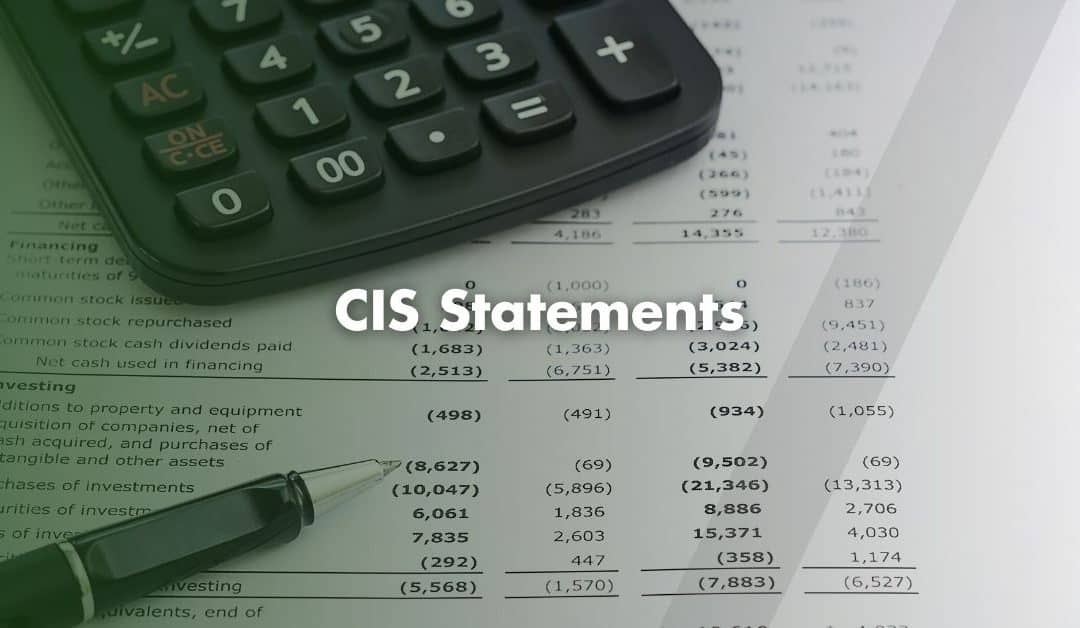The UK Government launched the Construction Industry Scheme (CIS for short) in 1971 in response to widespread tax evasion in the construction sector. So with CIS Statements, contractors now deduct tax from their subcontractor’s payments at the source and submit it to HMRC.
What are CIS Statements?
CIS Statements are official documents which contractors provide to their subcontractors. It shows how much the contractor paid for the subcontractor’s work and how much tax they deducted under the CIS scheme.
It’s like a construction industry payslip.
Each CIS statement covers a tax month, running from the 6th of one month to the 5th of the next. Contractors must also issue CIS Statements within 14 days of the tax month ending.
For example: A payment made in June falls under the tax month ending 5th July, so the statement must be issued by 19th July.
These statements serve as proof of income and tax deductions. Subcontractors use them when completing their Self Assessment tax returns. Without them, they risk underreporting income or missing out on tax refunds.
What Details Should a CIS Statement Include?
While there is no fixed layout, certain information must appear on every CIS Statement:
- The contractor’s name, address and employer tax reference number
- The subcontractor’s full name, address and Unique Taxpayer Reference (UTR)
- HMRC Verification Number (for 30% deductions)
- Gross payment (excluding VAT)
- Cost of qualifying materials
- Amount of CIS tax deducted
- Net payment after deduction
- The tax month the statement covers
Even subcontractors with Gross Payment Status should ideally receive a statement showing that no deductions were made.
When Should Contractors Issue CIS Statements?
Contractors must give CIS Statements to subcontractors no later than the 19th day following the end of the tax month. If a contractor makes payment on 2nd April, it falls under the tax month ending 5th April, and the statement is due by 19th April.
If subcontractors receive multiple payments in a single tax month, contractors may choose to:
- Issue a single consolidated statement
- Provide individual statements for each payment
This choice also depends on their accounting software. Regardless of method, subcontractors must receive complete and timely statements by the monthly deadline.
Calculating Deductions
Deductions depend on the subcontractor’s CIS registration status. Contractors must verify each subcontractor with HMRC before making payments. Based on verification:
- 20% deduction for registered subcontractors
- 30% deduction for unregistered or unverifiable subcontractors
- 0% deduction for Gross Payment Status subcontractors
To calculate deductions accuately:
- Remove any VAT from the payment
- Subtract the cost of any qualifying materials
- Apply the applicable deduction rate (20% or 30%) to the remainder
Subcontractors should also provide evidence of material costs. If not, contractors must make a fair estimate.
Can Subcontractors Avoid CIS Deductions?
Subcontractors can apply to HMRC for Gross Payment Status. This means contractors will pay them in full, with no tax deductions at source. The subcontractor must then manage their own tax payments.
To qualify for Gross Status, subcontractors must:
- Consistently file and pay taxes on time
- Earn at least £30,000 annually (excluding VAT and materials)
Losing CIS Statements
If a subcontractor loses a CIS Statement, they can ask the contractor for a replacement. The contractor should clearly label the new copy as a “Duplicate” to avoid confusion.
If the contractor is no longer trading or unreachable, the subcontractor should contact HMRC. The request should include:
- The subcontractor’s name, address and UTR
- The contractor’s name, address and tax reference (if known)
- Months for which statements are missing
- Explanation of why the original copies are unavailable
Contact Us
We are not just accountants; we are Chartered Accountants with one of the most reputable and premium accounting bodies. We are registered and regulated by ACCA; so you can rest assured that you are in good hands. Knowing this, don’t hesitate to get in touch with us if you require assistance: Pi Accountancy | Contact Us

